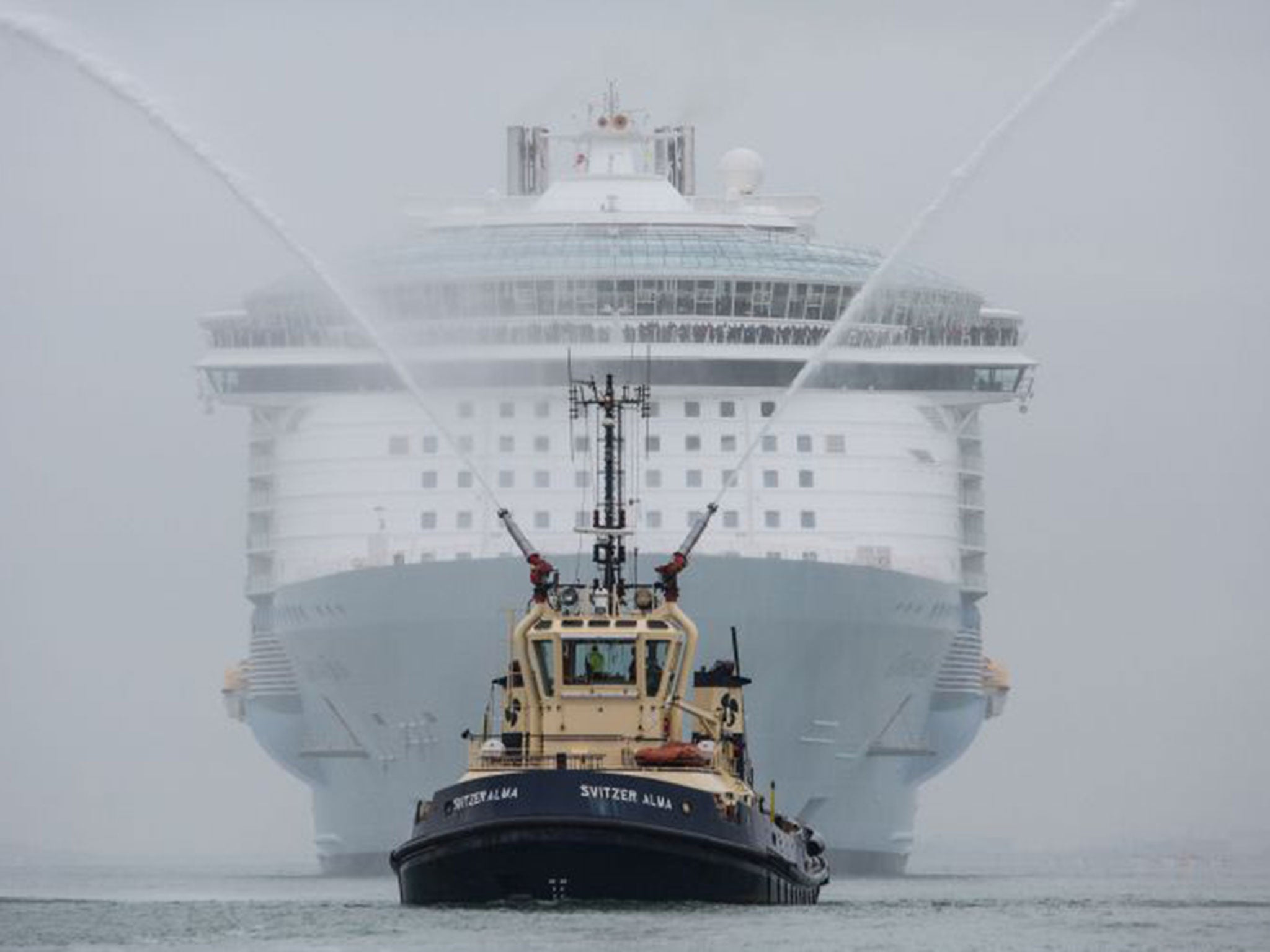Super-sized ships arrive in Britain: How big can they get?
Two of the largest vessels in the world cruised into UK waters last week. Simon Usborne measures up some giants of the sea

On the morning of 26 April 1956, a former petrol station attendant called Malcom McLean stood beside a port terminal in New Jersey. He had just ditched his profitable trucking company to launch a revolutionary new way of shipping cargo. More than 100 dignitaries gathered to watch a converted Second World War tanker carrying 58 metal boxes set sail for Texas, making history along the way.
On Sunday, the bloated successor to McLean's globe-shrinking vision sailed up the Thames as the biggest ship ever to have set a course for London. The Edith Maersk is, to be brief, bloody massive. McLean's ship was 160m (525ft) long. Edith is 397m long and can carry 13,500 containers. By my calculations, that's enough to hold 796,540,500 boxed iPhones, which is more iPhones than have actually been sold.
Crazy stats explain part of the fascination many of us find in big boats. They're impossible to get our heads round otherwise, yet vital to the way of life that they have enabled. "90 per cent of everything you buy has come in a box from somewhere, yet few of us have the vaguest idea how shipping works," says Chris Gosling, the founder of Shipping TV, who went aboard Edith while she was moored on Sunday.
Here's another stat. If you plonked the Edith Maersk, which is a member of Maersk's gargantuan "E-class" family of container ships, on its end in London, it would out-scrape the Shard, the city's tallest building, by almost 100m. Only 20 buildings in the world are taller than Edith is long.
This space and size race is even fiercer in cruising. Last week, the Oasis of the Seas cast a shadow over Southampton. At 362m, she is almost as big as Edith and the largest cruise liner in the world. She was built to carry as many as 6,300 passengers, about the population of Chipping Norton. In 2011, I had the peculiar pleasure of joining the maiden voyage of the Disney Dream (340m; 4,000 passengers). She was so big that, while I gathered later that Whoopi Goldberg had been on board, I never saw a single dreadlock in three days at sea.
The question is, how big can they go? When do these economies of scale go overboard? It happened for oil tankers years ago. In the 1970s, competition and global influences including Middle East unrest and the closure of the Suez Canal compelled shipbuilders to go huge. In 1979, the 460m Seawise Giant became the longest ship ever built. But soon the economic winds changed again, and the efficiency of the "supertanker" sank without a trace.
Tristan Smith, a researcher specialising in shipping at the Energy Institute at University College London, says the size of the biggest ships limits them to such a degree that commissioning one is a huge gamble. "You couldn't even navigate those supertankers up the English Channel," he says. "One of the big problems with container ships is crane capacity. The width of ships is limited to the reach of the cranes that load the containers."
Edith was launched in 2007 but has only now been able to venture up the Thames thanks to the opening last year of London Gateway, a port in Essex 20 miles downriver from the capital itself. It joins Southampton and Felixstowe as the only UK ports capable of handling the largest ships. Even America – the birthplace of the container ship – has no port big enough to handle them.
Shipping giants have to add these considerations to the potential for future economic and political storms. "A decision to purchase a new type of ship is a bet-the-company decision," says Marc Levinson, author of The Box, which charts the journey and impact of container ships from McLean to today. "Their viability depends a lot on facts not all of which can be foreseen."
Economics is already limiting the speed if not size of these ships. Because there is so much space on so many decks, it's cheap to ship stuff, which means shipping companies have to save money on fuel, which is expensive, by going slow. "Before the crash, a ship like this would go at about 24 knots. Now they're going at about 16 knots," Smith explains. Great news for carbon emissions, but Maersk, which ordered the first of 20 Triple-Es (a touch longer and wider than its E-class ships) in 2011, is banking on economic recovery to get their four-storey engines running at full speed.
Despite the physical limits and risks, boats to make Edith look modest are already on the horizon. Gosling is anticipating ships of more than 450m within the next five years. But Levinson, who recounts in his book the soaring riches and then bankruptcy of McLean after he gambled and lost on a new fleet of ships in the 1980s, advises caution. "I'm not sure there's a market for bigger ships but that doesn't mean someone won't build one," he says.
Join our commenting forum
Join thought-provoking conversations, follow other Independent readers and see their replies
Comments